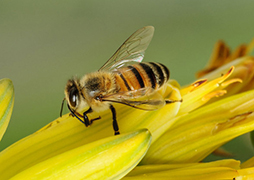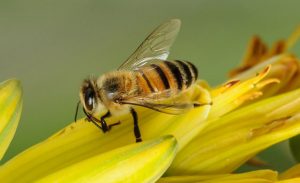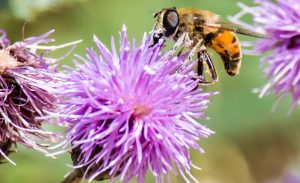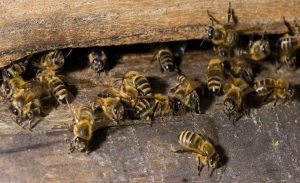
European Honey Bee Facts
- Scientific name: Apis mellifera Linnaeus
- Size: ½ inch
- Color: Yellow
Honey Bee History
In the 1950s, twenty-six African honey bee queens, imported to Brazil from South Africa escaped with swarms of local worker bees from Dr. Warwick Kerr’s experimental facility near San Paulo, establishing renegade colonies of Africanized bees in Central America, Mexico and Texas.
Since the 1990s, Africanized bees, nicknamed “killer bees,” have been interbreeding with feral European honey bees in the Southwestern United States, Tennessee and South Florida causing experts to believe that all feral honey bee colonies in the US have become Africanized. Entomologists advise homeowners to contact a professional pest control company, such as Truly Nolen, to address feral colonies and nests in order to keep people and pets out of harm’s way.
European Honey Bee Behavior
The European honey bee in the US is our most beneficial pollinator. European honey bees can trace their lineage to a complex interbreeding of European honey bee subspecies introduced to the US by early American pioneers in 1622.
European honey bees live in highly structured eusocial colonies, which refers to their social organization centered around the queen bee. With a singular queen who lays all of the eggs and multiple male drones who fertilize the queen and then die, the majority of European honey bee colonies consist of sterile female worker bees. Worker bees, though smaller than the queen and the drones, perform most of the work in the colony, as well as caring for and raising young bees.
European honey bee colonies are divided into two groups: young honey bees perform that all the cleaning and cell construction duties in the hive, and adult bees that process nectar into honey and raise the young bees. At some point, these newly developed adult bees move on to the field positions, collecting nectar to feed the colony and protecting the colony from intruders and predators.
An interest in professional beekeeping in the United States has increased since 2006 when honey bee populations suddenly decreased. This decrease was due to colony collapse disorder and got the attention of the agricultural community, scientists, professional beekeepers and the general public because honey bee pollination directly affects the global food supply to a significant extent.
Species Species

4 Seasons Pest Control

Satisfaction Guarantee
What it includes*
-
Ants
-
Crickets
-
Fleas
-
Mice
-
All Roaches
-
Scorpions
-
Spiders
-
Ticks
-
Wasps
-
Other*



